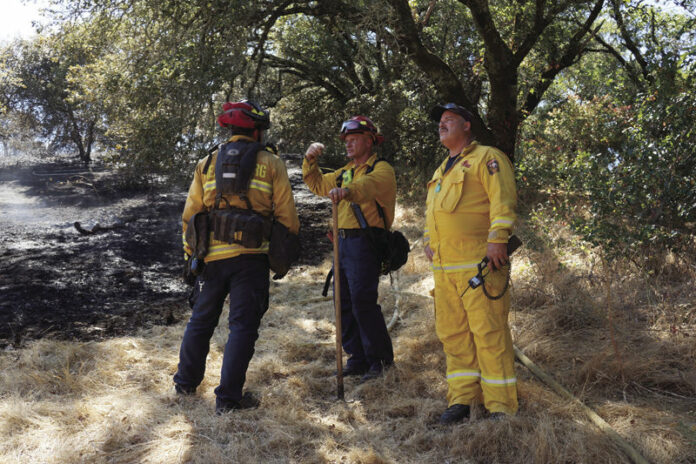
Healdsburg fire chief and fire marshal talk fire preparedness
Healdsburg’s fire chief said there is a only a small chance firestorms like the ones in October will happen again, but the fire department is prepared for an active season.
“I mean, you just don’t know,” Chief Jason Boaz said. “We’ve had many, many years of severe drought.”
In order to remain proactive Healdsburg Fire Department utilizes a strategy of quick response time and collaboration with other agencies.
“We try to put as many resources as we can on it as quickly as possible,” he said. “We continue to work with other agencies and I think our response is good.”
Healdsburg fire collaborates with other agencies in Zone 6, which stretches from Windsor to the Mendocino County line, to respond to larger areas of coverage. They also share battalion chief coverage with CAL Fire, Cloverdale and Geyserville.
Boaz, Healdsburg’s fire chief since 2016, said two significant changes have occurred since the October firestorms. One is the rise of community group organizations and the other is the development of notifications.
Getting alerts out in the midst of a fire is a challenging task. Boaz said new developments in the way the fire department gets word out are on the way.
“It’s changing the way we operate,” Boaz said.
With a stream of notifications on social media, Nixle alerts and other systems, citizens may be on edge. Linda Collister, Healdsburg Fire Marshal since 2007, said it’s a delicate balance between keeping people informed and not getting a flooded phone line with worried citizens.
“We’re doing all these communications so people get the information,” she said. “The communication is not for them to receive and then call 911.”
Prevention tactics are key to keeping fire numbers low this season. Simple tasks such as maintaining correct addresses and mowing tall weeds can go a long way in minimizing a fire’s impact.
“We have a very aggressive weed abatement program,” Collister said. “It’s made developers really think about their neighborhoods.”
Vegetation management is also a step the fire department is taking to stall a wildfire. Even with a good rainy season, the fire fuels are still dry. It’s not just the grass, but surface fuels that cause a foothold for a wildfire.
Surface fuels include needles, twigs, brush, leaves, small trees and logging slash. Dry or dead trees also burn more quickly and can cause fires to escalate.
“We’ve done a lot of clearing on Fitch Mountain,” she said.
With limited resources, it’s critical to have citizen programs to fill the gaps for fire preparedness. Collister said communities with Citizens Organized to Prepare for Emergencies, or COPE programs, and similar groups are collaborating with the fire department.
“They have a phone tree that goes out to their neighbors,” Collister said.
Healdsburg fire has a total of 13 regular staff members and 21 reserve staff firefighters. Reserves are also utilized in mutual aid of shared coverage areas.
The department holds a contract with the county to provide fire service to Fitch Mountain, including all unincorporated areas on the mountain outside of the city limits.
Healdsburg also holds a contract to cover the Dry Creek/Sotoyome fire district, including 65 square miles of unincorporated Sonoma County adjacent to the city in Dry Creek Valley, Bailhache Avenue to Rio Lindo and Westside Road to Sweetwater Springs.







